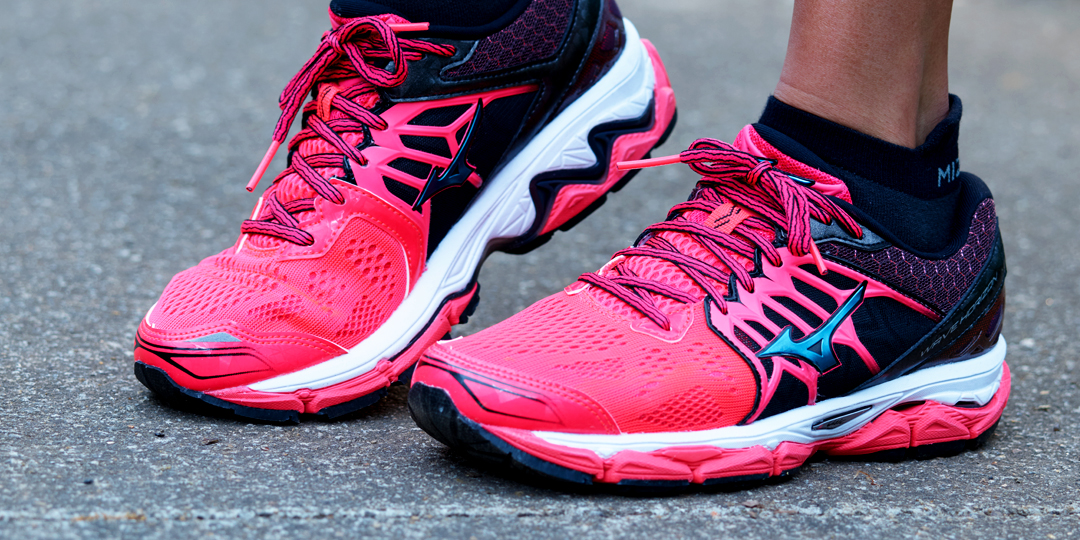
Published: February 8, 2017
The cool, rainy Northwest is a destination of sorts – a haven that provides ideal training conditions and houses several of the nation’s top runners. To Mizuno VP of Running Footwear and Design, Todd Lewis, it’s the perfect incubator for running innovation.
A former collegiate standout at Arizona State and Olympic Trials competitor, Todd leads the Running footwear team at the Mizuno Design Center for Product Excellence in Portland, Oregon. He spends his days in the silhouette of Mt. Hood, amongst the firs and spruce, blazing new trails for Mizuno with a group of talented designers and innovators.
Now, the team’s newest creation, the Wave Horizon, is bringing an entirely new feel to Mizuno’s running shoe lineup.
Lewis gave The Insider the scoop on what’s different about the Wave Horizon – and why it’s changing the game for runners who need a responsive but stable running shoe. Read Lewis’s insights below, and check out the Men’s or Women’s Wave Horizon to feel the difference for yourself.
The all-new Wave Horizon is a departure from the norm for Mizuno Running. Can you explain what that means?
TL: I think it helps to first understand what Wave® technology does. It is engineered to deliver three benefits: shock dispersion and cushioning, guidance and – probably the most unique aspect of Wave – a responsive feel. It delivers an energy return at the right moment in the footstrike to guide energy across the midfoot and through the drive phase, for a responsive return at the right moment to help boost performance and overall ride experience.
In the past, Wave, has really been designed for a specific type of runner who wanted a responsive ride. That usually ended up equaling “hard” in some runner’s mind and we kind of got niched as that type of brand – the one that makes shoes with a hard underfoot feel. In recent years, a lot of brands have started to offer more dimensional underfoot experiences, from soft to firm to responsive. Admittedly, we fell behind. What we’re doing now is changing that.
The Wave Horizon was built with the idea of creating a max cushioning stability shoe that not only would it be responsive, but it would have a lively, soft underfoot feel. We’ve tried some shoes in this category before, and we’ve always delivered on stability and response – but we couldn’t deliver on “soft, lively” aspect until now.
What’s different about the Wave technology in the Wave Horizon? How is it improving that underfoot feel?
TL: In addition to our Fan wave – which offers dynamic support for overpronators – the Wave Horizon features a brand new Wave geometry.
When I started at Mizuno a couple of years ago (in 2015), we revamped the philosophy and the thinking on our shoe lineup a little bit. Previously, Wave was set up solely to disperse the shock at impact. And while a shoe may disperse shock, that necessarily doesn’t mean it’s going to be soft, right?
With our softer wave plate, we’ve changed that. It’s a new Wave technology that consists of a concave shape in the heel that flexes and creates a softer landing for the runner. Shifting away from a full-length wave plate as seen in our previous max cushioning models, we replaced the forefoot section with newly-engineered version of our U4icX foam to make the shoe more flexible and softer than anything Mizuno has ever offered before. Runners still receive the stability they need, but they can also enjoy the added benefit of a softer ride.
What’s different about the upper design in the Wave Horizon?
TL: The upper design of the Wave Horizon still utilizes our DynamotionFit® philosophy. And what we really try to focus on the “disappearing fit.” You put the shoes on, you go for a run, and you don’t even have to think about your shoe – it’s a perfect fit.
One of the things we’re doing differently now is adding a sock-like booty construction to the upper for a more secure fit. This new engineering eliminates wrinkles, seams and ultimately reduces the chance of rubbing issues. We’ve also introduced a “cage,” or a panel that provides an extra-secure fit on the midfoot.
The Wave Horizon also contains an engineered mesh in the forefoot, which allows us to specifically target key areas to improve the hold of the material. In other words, the forefoot fit is now more finely-tuned than ever before.
The Wave Horizon is a completely new product. How do you bring something like that to life? And how did you build it out around the wants and needs of real runners?
TL: We do a lot of testing. We have two testing centers – one in Atlanta and one in Vancouver, British Columbia. On any given project, we tap into feedback from about 100 runners. We go through four or five prototypes, of every aspect of the shoe’s anatomy, before we land on a final version – and it’s based on what runners tell us.
When we tested the Wave Horizon, we used several versions. Some included the Wave plate in the full length of the forefoot – as it traditionally has been in Mizuno shoes – and some included a shortened Wave plate. We thought people were going to react to the shorter plate by saying, “Oh it’s not as stable, it’s not as lively.”
What we found instead is that people loved the feel of the new wave technology, and introduction of more foam underfoot. And they loved the fact that the forefoot was soft and flexible. We were really surprised when the runners chose those new prototypes over the more traditional ones. But that’s how the Wave Horizon came to life.
